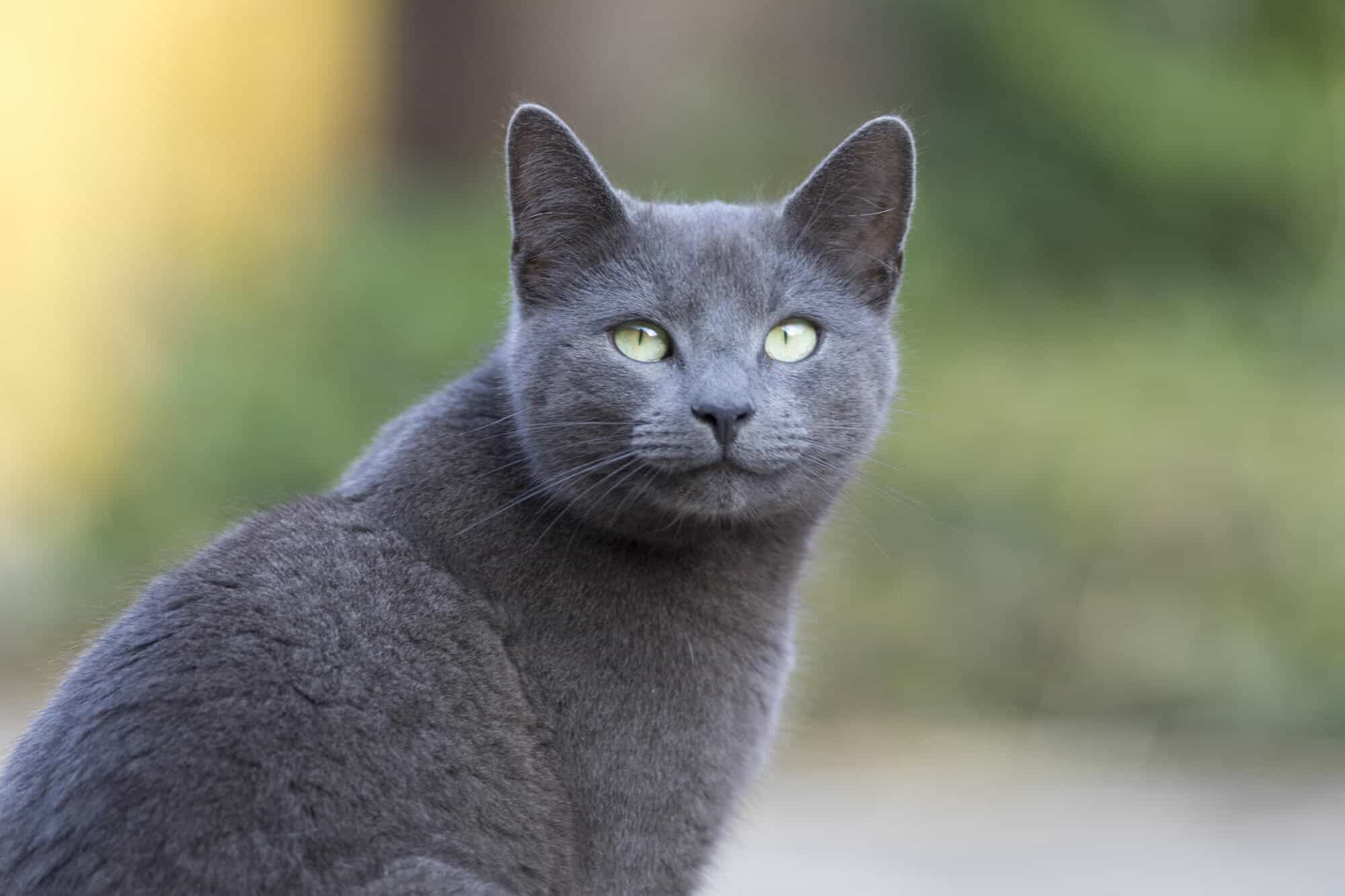Introduction:
Russian Blue and Ragdoll cats are two distinct breeds with unique characteristics that set them apart in the feline world. From their striking appearances to their distinctive temperaments, each breed offers a different experience for cat enthusiasts. This article explores the breed details of Russian Blue and Ragdoll cats, shedding light on their origins, physical traits, personalities, and care needs.
Russian Blue Cats:

History and Background
Russian Blue cats have a mysterious origin, with speculation that they were brought to Europe from Russia in the 19th century. They were originally known as “Archangel cats” and gained popularity for their elegant appearance and gentle disposition. Russian Blue cats were officially recognized as a breed in the late 19th century and have since become cherished companions.
Physical Characteristics
Russian Blue cats are medium-sized cats with a slender, athletic build and a striking blue-gray coat. They have short, dense fur that lies close to their body, accentuating their graceful lines. Russian Blue cats are known for their vivid green eyes and their distinctive double-layered coat, which has a soft, plush texture.

Temperament
Russian Blue cats are renowned for their gentle, reserved, and intelligent nature. They are typically quiet and observant cats that form strong bonds with their human companions. Russian Blue cats are affectionate but may be shy around strangers, preferring to observe from a distance until they feel comfortable. They enjoy interactive play and may thrive in a calm, predictable environment.
Care and Health
Russian Blue cats have minimal grooming needs due to their short, dense coat, requiring only occasional brushing to remove loose hair and prevent mats. They are generally healthy cats but may be prone to certain health issues, including dental problems and urinary tract issues. Regular veterinary check-ups and a balanced diet can help maintain their health.
Ragdoll Cats:

History and Background
Ragdoll cats have a fascinating origin story, with their beginnings traced back to a cat named Josephine in the 1960s. Josephine, a white domestic longhaired cat, produced kittens with unique temperaments and physical traits, leading to the development of the Ragdoll breed. Ragdoll cats are known for their docile nature and tendency to go limp when picked up, earning them their name.
Physical Characteristics
Ragdoll cats are large, muscular cats with a semi-longhaired coat that is soft and silky to the touch. They have a pointed coloration, with darker fur on their ears, face, paws, and tail, and a lighter body color. Ragdoll cats come in various color patterns, including seal, blue, chocolate, and lilac, and their vivid blue eyes are one of their most striking features.

Temperament
Ragdoll cats are famous for their gentle, affectionate, and laid-back temperament. They are often described as “puppy-like” cats, enjoying being held and cuddled by their owners. Ragdoll cats form strong bonds with their human companions and are known to follow them around the house like loyal shadows. They are sociable and get along well with children and other pets.
Care and Health
Ragdoll cats have moderate grooming needs due to their semi-longhaired coat, requiring regular brushing to prevent mats and tangles. They are generally healthy cats but may be prone to certain health issues, including hypertrophic cardiomyopathy (a heart condition) and urinary tract issues. Regular veterinary check-ups and a balanced diet are essential for their well-being.
Conclusion:
Russian Blue and Ragdoll cats are both captivating breeds with distinct characteristics that make them cherished companions. Russian Blue cats are ideal for those seeking an intelligent, reserved, and elegant cat with minimal grooming needs. Ragdoll cats are perfect for individuals who appreciate a gentle, affectionate, and docile cat with a luxurious coat. By understanding the breed details and characteristics of Russian Blue and Ragdoll cats, you can find the perfect feline friend to enrich your life with love and companionship.
Frequently Asked Questions:
1. Which breed is more suitable for families with children?
Both Russian Blue and Ragdoll cats can be suitable for families with children, but it’s essential to consider the temperament of each breed. Russian Blue cats are typically reserved and may prefer a calm environment, making them ideal for families with older children who understand how to interact gently with cats. Ragdoll cats, on the other hand, are known for their gentle and affectionate nature, making them great companions for families with children of all ages.
2. Do Russian Blue or Ragdoll cats get along well with other pets?
Both Russian Blue and Ragdoll cats can get along well with other pets if properly socialized from a young age. Russian Blue cats may be more reserved and cautious around other pets, preferring calm and predictable interactions. Ragdoll cats, with their laid-back temperament, are generally sociable and can adapt well to living with other pets, including dogs and other cats.
3. Which breed requires more grooming, Russian Blue or Ragdoll cats?
Russian Blue cats require less grooming compared to Ragdoll cats due to their short, dense coat, which sheds less and is less prone to matting. Russian Blue cats may only need occasional brushing to remove loose hair and maintain their coat’s health and appearance. Ragdoll cats, with their semi-longhaired coat, require regular brushing to prevent mats and tangles and keep their fur silky and smooth.
4. Are Russian Blue or Ragdoll cats more vocal?
Ragdoll cats are typically more vocal compared to Russian Blue cats. Ragdoll cats are known for their soft and melodic voice, often communicating with their owners through gentle meows and chirps. Russian Blue cats, on the other hand, are generally quiet and reserved, preferring to express themselves through subtle body language rather than vocalizations.
5. Which breed is better for apartment living, Russian Blue or Ragdoll cats?
Both Russian Blue and Ragdoll cats can adapt well to apartment living, but Russian Blue cats may be more suited to apartment life due to their calm and reserved nature. Russian Blue cats are generally less vocal and active compared to Ragdoll cats, making them better suited to smaller living spaces. Ragdoll cats, while adaptable, may appreciate access to outdoor space or a larger living environment for play and exploration.





